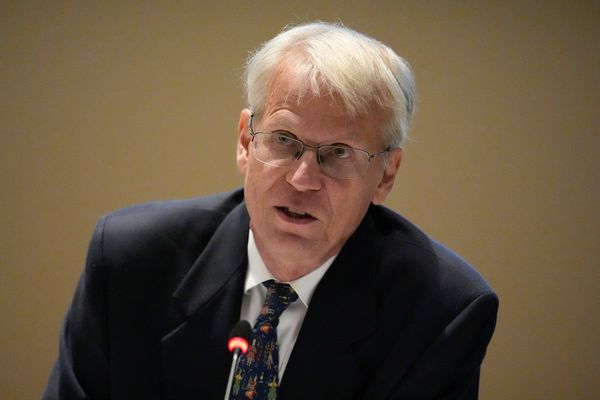The Johor–Singapore Special Economic Zone (JS-SEZ) has been hailed as a game changer for ASEAN. Launched in January 2025, this cross-border initiative brings together Malaysia’s land and workforce with Singapore’s capital and connectivity — aiming to be the future hub of trade, talent, and technology.
Expected to tighten relationship toward Southeast Asia’s regionalism, the JS-SEZ is potentially becoming ASEAN’s Shenzhen — China’s Silicon Valley.
But beneath the promise lies a critical challenge: the legal and governance system.
Without a robust, inclusive, and enforceable legal system, the JS-SEZ risks repeating the fate of past mega-projects like Forest City, a multibillion-dollar Malaysia–China property development that promised economic growth but ended up largely underoccupied and criticised for poor planning.
Malaysia’s legal complexity issue
The success of the JS-SEZ won’t just depend on cutting-edge infrastructure or diplomatic finesse. More importantly, it will rely on a clear and effective legal system.
Whether this ambitious plan becomes reality — or just another missed opportunity — will hinge on vigorous enforcement and solid cooperation between Malaysia’s federal and state governments.
Baca juga: Ahead of ASEAN Economic Community, Indonesia should consider economic zones at her borders
The JS-SEZ spans both Singapore and Malaysia — two countries with some different legal, administrative, and land use planning systems. While the ambitious vision includes cross-border mobility, integrated logistics, and harmonised tax rules, Malaysia’s complex regulatory environment remains a major obstacle.
Singapore operates under a unitary system, while Malaysia’s is federal, giving individual states significant planning authority. Unlike Singapore’s streamlined system, Malaysia still faces fragmented land use planning and construction oversight.
Although Malaysia has Development Plans to guide its infrastructure and zoning, these plans are often outdated, incomplete, poorly enforced, or ignored.
To aggravate the issues, legal overlaps and constitutional jurisdiction between federal and state authorities create confusion. The Town and Country Planning Act 1976 (Act 172), the National Land Code (Revised – 2020) (Act 828), the Street, Drainage and Building Act 1974 (Act 133), and the Uniform Building By-Laws 1984 contain provisions that not only contradict one another but also grant unwarranted immunity to authorities, thereby creating bureaucratic bottlenecks and fostering unaccountable administration.
Learning from the Forest City
Forest City — once a beacon, a high-profile mega project within JS-SEZ vicinity — offers a cautionary tale. Initially promoted as a smart eco-city for 700,000 residents in Johor, it now houses fewer than 10,000. Many buildings are abandoned, infrastructure is underused, and land reclamation has damaged local marine.
The project’s developer, now facing funding issues, failed to deliver the projected goals. Meanwhile, local communities feel marginalised by the unaffordable housing provided by the project.
Forest City demonstrates how ambitious planning can fall short without robust legal safeguards, effective housing reforms, solid environmental protection, and inclusive planning to achieve social justice.
Delays in getting land and planning approvals, as well as inconsistent law interpretations — such as in cases like Syarikat Bekerjasama-sama Serbaguna Sungai Gelugor, Perbadanan Pengurusan Trellises, and Visamaya Sdn Bhd — may also keep investors away from Malaysia.
Indonesia’s SEZ experience adds more lessons. The Batam–Bintan–Karimun zone, for instance, suffered from unclear land tenure, overlapping jurisdictions, and poor central-local coordination. Investors faced regulatory uncertainty..
In contrast, Kendal Industrial Park in Central Java, co-developed with Singapore, has succeeded thanks to a centralised legal regime and streamlined approvals.
How to fix the problems
To avoid repeating past mistakes, five urgent reforms for JS-SEZ are needed:
1. Enact a dedicated JS-SEZ land development act
This law must integrate and coordinate planning, land, transportation, environmental, taxation, building, and investment regulations across the federal and state governments. With six local authorities and 11 priority sectors involved, overlapping jurisdictions could lead to duplication, delays, and confusion.
2. Create a statutory master plan
Johor and Singapore should initiate a special development and master plan that governs land use planning covering infrastructure, housing, logistics, sustainability, and public services. Without legal weight, such plans risk being shelved. The blueprint must be strategic, implementable, and regularly reviewed to maintain its effectiveness and relevance over time.
3. Empower technical agencies
Public works, environment, geo-science and mineral, and irrigation departments, as well as other relevant technical agencies, should move beyond advisory roles to decision-making authority in land use planning. Their approvals should be premised on sound technical, safety, and environmental grounds.
These technical agencies should also be legally responsible for providing accurate, up-to-date big data and analytics for every district in Malaysia, including challenges and measures. Outdated guidelines must be replaced with real-time insights, and artificial intelligence should be adopted to enhance decision-making and service delivery.
4. Community inclusion
Planning must be people-centered. Zoning should strike a balance between investor interests, housing and property affordability, green spaces along with public amenities, interest, and welfare. Community consultation should go beyond symbolism and become a legal requirement, with feedback influencing decisions.
Another pressing issue is rampant land speculation with property prices adjacent to the RTS transit stations spiking to more than MYR2,000 per square foot (approximately US$470).
Such rapid increases price out residents from the housing market. Legal means like land price controls, mandatory quotas for affordable housing, and the application of reversionary rights could be used to ensure inclusivity and equitable urban development.
5. Energy transparency
The JS-SEZ’s long-term success also depends on clean, stable energy. Data centres, for example, require reliable high-capacity power.
Energy infrastructure will also determine the viability of JS-SEZ. Industries, especially data centres, need stable, clean power.
While solar and hydrogen are promising, they may not meet short-term industrial needs. A shared nuclear energy project between Malaysia and Singapore could offer a sustainable solution by modelling after the Krško plant in Slovenia and Croatia.
However, such a project must be grounded in robust laws, meaningful public participation, and rigorous safety and security standards.
We must not build another Forest City. We must create a future that works for all —legally, sustainably, and inclusively.
Nuarrual Hilal Md Dahlan tidak bekerja, menjadi konsultan, memiliki saham, atau menerima dana dari perusahaan atau organisasi mana pun yang akan mengambil untung dari artikel ini, dan telah mengungkapkan bahwa ia tidak memiliki afiliasi selain yang telah disebut di atas.
This article was originally published on The Conversation. Read the original article.







